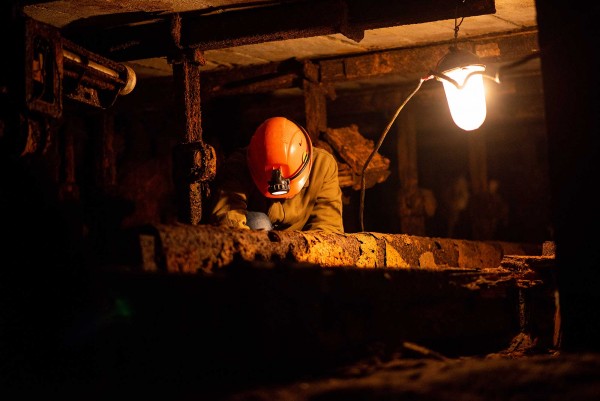The same happens during 3D printing: The majority of material used release respirable dusts during postprocessing. These are held responsible for cancerous and cardiovascular diseases, among others.
Safety standard often still inadequate
The standard of safety during manual postprocessing is inadequate in many companies, regardless of the postprocessing stage involved. Deburring boxes, which are used for the purpose in many companies, are not much better than protective goggles. Although their glass panes shield the eyes, they do not retain dusts. Larger vibratory grinding and blasting units often have appropriate and safe extraction and filtering equipment. However, they alter the geometry of the components and are therefore not suitable for every finish or workpiece.
The ENESKApostprocess was designed to provide precisely this manual and high-precision finish with as much safety and ergonomics as possible. The joke development team’s aim was to deliver the best feasible solution. “Which is why our motto was: better a little more than too little”, says joke product manager Ibrahim Anusch to emphasise his own claim.
The ENESKApostprocess is completely encased and locked. No dust can escape from its working area. After all processing stages, the interior is also completely cleaned with an air shower. There is an approximately 20 to 30-second post-suction phase before the unit can be opened - only then is the glass dome unlocked and the finished workpiece can be removed. The system fulfils important IG Metall trade union “golden rules” for dust control, such as dust extraction directly at the point of exit.
Health risks
- Skin irritation
Occupational skin disorders, so-called occupational dermatoses, are among the most frequently recognised compensatable occupational diseases in Germany. The symptoms range from redness, dry skin, flaking, itching and fissures to chronic inflammation.
- Cancer diseases
Above all fine dust increases the risk of developing various types of tumour. The risk of lung cancer had already been well documented for some time. More recent research however indicates a markedly higher risk for tumours in the upper digestive tract, breast, liver, pancreas or gallbladder.
- Asthma
Asthma (clinically known as bronchial asthma) is a chronic, inflammatory disease of the airways with permanent hypersensitivity. The inflammation can lead to attacks of shortness of breath due to acute narrowing of the airways. The airways react sensitively to various stimuli and can then become inflamed. Around 5% of adults and 7 to 10% of children suffer from bronchial asthma.
- Silicosis
Silicosis (or pneumoconiosis) occurs as a result of inhaling inorganic dusts. This results in lung changes that can lead to pulmonary fibrosis. It is one of the most common occupational diseases in Germany. The causative agents are generally coal, asbestos or quartz dusts.

